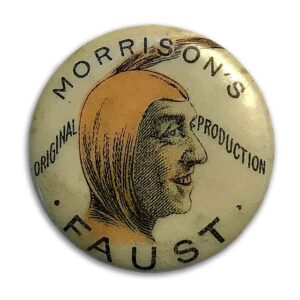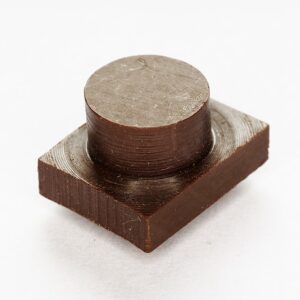When we think about which technological age we’re in, a number of ideas may come to mind. Adam Savage and Jamie Hyneman of Mythbusters touched on this idea in a 2014 video titled, “The Glass Age.” In the feature, they briefly contemplated co-existing modern technologies so intertwined with our everyday lives that living without them is unfathomable. The duo mulled over things like The Information Age, and of course, The Glass Age. Under the umbrella of technological marvels that define the age we live in, alongside glass and information technology, is plastic.
From the moment we wake up to when we turn the lights out for the night, we are in the presence of plastic. Plastics play a critical role in the world around us – present in everything from household items like computer keyboards, appliances and clothes, to plumbing and electrical infrastructure. Lightweight, durable, and flexible in application, plastic is even a go-to for crucial industry components for life-science and aerospace devices, agricultural equipment and more. Indeed, it’s impossible to fathom the modern world without plastic.
Alexander Parkes brought the first manufactured plastic, Parkesine, to the public during London’s 1862 Great International Exposition. He discovered it while initially seeking a substitute for waterproofing agent, forming the material by mixing cotton and vegetable oil with nitric and sulfuric acid. Parkes tried to market Parkesine as an alternative to ivory, and while it landed him a bronze medal at the exposition, its high flammability made it a commercial failure. While Parkesine is obsolete in today’s world, Alexander Parkes is widely considered the father of the plastics industry.
Not a year later and on the other side of the world, a New York billiards company called Phella and Collender offered $10,000 as a reward to whoever was able to invent an ivory substitute for billiard balls. Billiards was experiencing a golden era of popularity, but the American Civil War – specifically the blockading of southern states, made ivory imports impossible. Enticed by the offer, budding inventor John Wesley Hyatt put himself to work seeking a solution. His experiments led to a number of discoveries over the next 6 years, culminating with celluloid in 1869.
If Parkes is the father of the plastics industry, Hyatt is the father of the plastic revolution. When he took celluloid to the market in 1872, he laid the foundation for interest in plastics and plastic development. Industries everywhere wanted to make use of the new material, prizing it for its low-cost compared to natural resources like wood and bone. For the first time, scarcity wasn’t a factor in manufacturing, and the reduced cost of materials made many previously expensive products more accessible to socio-economic groups beyond the wealthy elite.

Plastic production exploded in the following years, and companies everywhere pushed new plastic products across multiple industries. Textile companies offered celluloid-sealed clothes, impervious to water. The dental industry saw an influx of new cosmetics in the form of dental plates, and celluloid photographic film was a hit as well. Hyatt’s work expanded to produce a flurry of new products as well, including bearings, sewing machines, and the first injection molding devices, and his customers eventually included other industry disruptors like Ford and GM. As the century rolled over into the early 1900’s, mass production plastic molding was replacing natural resources in everything from combs to pens to toothbrushes and piano keys.
Yet, for its massive popularity, celluloid had a ruinous flaw – it was highly flammable and even prone to explode. Billiard balls were prone to exploding if struck against each other too hard, celluloid photo film was likely to spontaneously combust under the heat of a projector, and even celluloid-waterproofed clothing could catch fire from stray cigarette ashes. For years, and despite this flaw, celluloid remained the go-to product in plastics manufacturing by virtue of being the best available option. However, a revolutionary future was on the horizon once again as the first decade of the twentieth century pressed on.
Leo Baekeland, a brilliant young mind from Belgian, was teaching physics and chemistry at university in Bruges when he won a traveling scholarship that saw he and his wife move to the United States. Working in photography at a New York company, Baekeland’s ascension to fame started in 1899 with the invention of Velox, a new photo printing paper. His invention was purchased for $750,000, the equivalent of $27 million in 2023. With his newly acquired fortune, Baekeland turned to plastics research, where he sought a substitute for shellac, which was traditionally made using Asian lac beetle secretions and used as an electrical insulator. He found the answer he was looking for and more in 1907.

The first fully synthetic polymer, Bakelite is a phenol and formaldehyde mixture that was dubbed, “the material of a thousand uses”, and it changed the world. Also the first thermoset plastic, and the quality that earned it that nickname in marketing, Bakelite was soft enough that manufacturers could form it into any shape under heat and then permanently harden it under pressure. This near magical ability coupled with an inherent resistance to fire, scorching, impact, and electricity made it perfect for a myriad of products, and it wasn’t long before Bakelite made its way into products from radios, telephones and jewelry to electrical coating and cars. The Plastic Age had truly arrived.

Plastic development saw another surge during WWII, when scarcity of natural resources once again demanded synthetic solutions for manufacturing. War and need fueled innovation, and a slew of new plastics were born. Polyethylene (PE) was accidentally discovered by members of English company Imperial Chemical Industries in 1933. PE became a closely guarded state secret as it allowed engineers to reduce airplane weight and improve electric insulation, both of which resulted in advantages against German pilots. Polystyrene was created and soon styrene-butadiene rubber (SBR) replaced traditional crafting methods for everything from tires to bushings and footwear soles. Wallace Carothers synthesized nylon at the DuPont Experimental Station in 1935, and the U.S military quickly adopted it for body armor, rope, and parachutes. These materials are still standards in today’s plastic industry, and we see them daily. PE in your Tupperware cabinet and plastic bags, SBR in automotive parts, and nylon in safety nets, plumbing fittings, screws and tents.
In today’s plastics industry, high-tech companies from aerospace to life sciences are constantly seeking the best in performance plastics, and where there is need there is an answer to be found. Modern thermoplastics such as Vespel, PMMA, and Ultem are in high demand – prized for their light weight, thermal and electrical insulation properties, and strength-to-weight ratios.
Vespel
Vespel was invented in 1965, and hosts a winning combination of lubricity, dimensional stability, and creep, heat, and chemical resistances that makes it prime material for applications in mission-critical systems that require staying power over extended periods of high demand use. Technologies in aerospace and transportation make use of Vespel for these prized properties, and common applications include bushings and bearings, valve seals, spline couplings, and compressor valve plates. One other notable use of Vespel is in NMR spectroscopy, where it’s desired for having a magnetic property similar to water at room temperature.
Ultem
Joseph Wirth, working for General Electric Plastics Division, developed Ultem in the early 1980’s. In the four decades since discovery, it has been a staple in medical and chemical industries and is popular for its ability to withstand flames, high heat thresholds, and solvents. Furthermore, its resistance to boiling water and steam autoclaving, UV and gamma radiation make it a desired material for circuit boards, sterilization equipment, and eyeglasses.
PMMA
PMMA, more commonly known as acrylic, was created by several laboratories around the same time in 1928 and was first introduced to the market as Plexiglass in 1933, where it was used during WWII for plane windows and turret canopies. This hardy plastic is still used as a glass substitute in an array of products from shatterproof windows and skylights to signs, plane canopies, and camera lenses. It also sees regular use in biomaterial applications as a replacement for teeth and other bone, and as bone cement.
From Parkesine to polystyrene, the last 150 years have seen plastics evolve from organic, cellulose based compounds meant to replace scarce natural resources, into a worldwide synthetic phenomenon with roles in every industry that exists in today’s global economy. Flexible in both property and application, this adaptable family of polymers has radically changed the way we function in everyday life. Be it the phones we carry, medical equipment that helps extend our lives, or the vehicles we get around in, the world as we know it wouldn’t exist without this diverse family of polymers. We really do live in the age of plastic.






